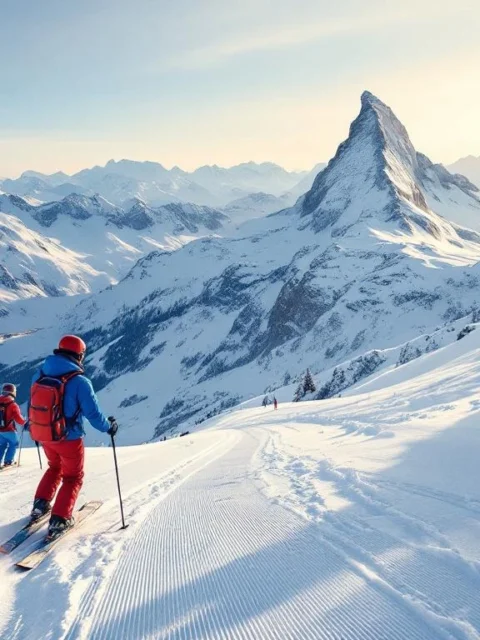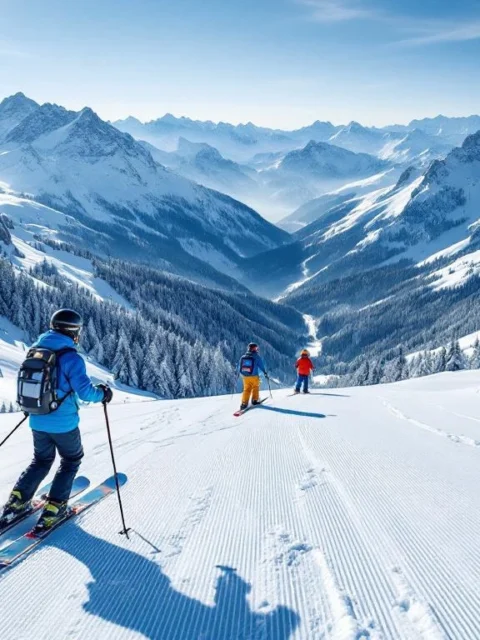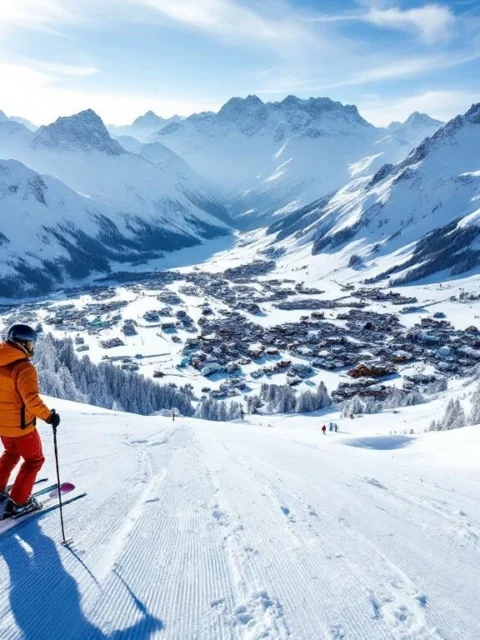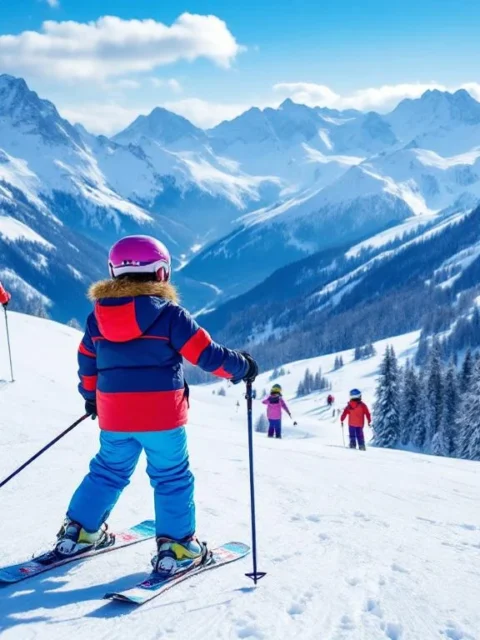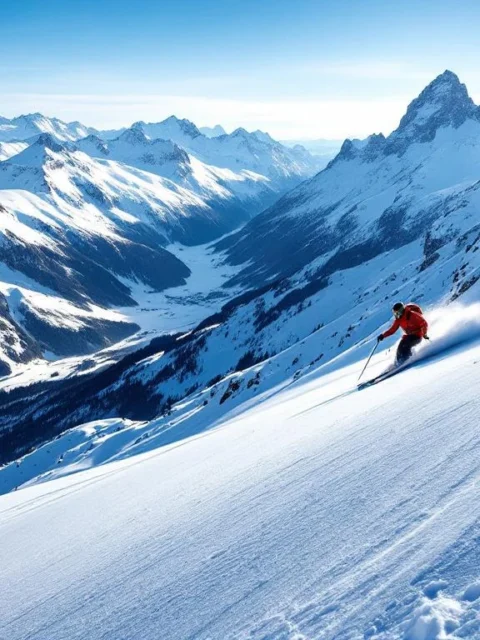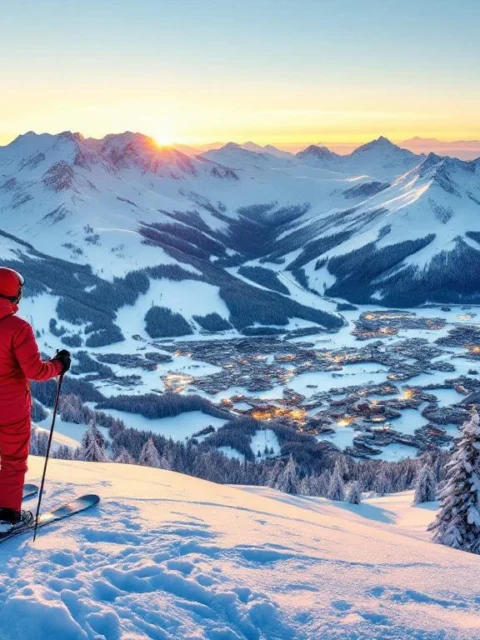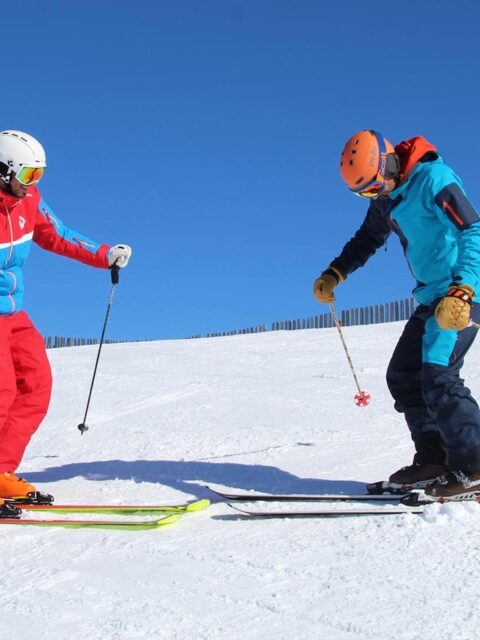How do you learn to ski as an adult?

There you are, as an adult, on the ski slope. You look down and wonder how all those children glide down so effortlessly. Good news! Even as an adult, you can perfectly learn how to ski. It might require a bit more patience and a different approach, but it’s definitely possible. In this article, you’ll discover how to master skiing as an adult, what challenges you can expect, and how to best deal with them.
The Physical Challenges of Learning to Ski as an Adult
Let’s be honest: your body works differently at an older age than when you were 8 years old. As an adult, you’ll immediately notice that skiing engages muscle groups you barely use normally. Your thighs, calves, and core (abdominal and back muscles) get a serious workout.
Balance is one of the most important aspects of skiing. As an adult, you have a higher center of gravity than children, which can make finding your balance more difficult. Additionally, as adults, we’ve often become more cautious – after all, we know what the consequences of a fall can be!
Your body needs time to adapt to the new movement patterns. It’s not just about strength, but also coordination and endurance. You’ll notice that after a day of skiing, you feel muscles you didn’t even know you had!
Practical Preparation Tips
Ideally, begin your physical preparation a few months before your ski vacation. Focus on:
- Strengthening leg muscles with squats and lunges
- Core training for better stability
- Balance exercises such as standing on one leg
- Endurance training to combat fatigue
Don’t forget to take regular breaks while skiing. Fatigue leads to reduced concentration and coordination, which increases the risk of falls. Hydration and good nutrition are also important to maintain your energy levels during long ski days.
For your first few lessons, it’s useful to get oriented on the right ski technique for beginners so you’re better prepared for what’s coming.
Group Lessons versus Private Ski Lessons: Which to Choose?
The choice between group lessons and private lessons is important for your learning experience. Both options have advantages and disadvantages that you should weigh based on your personal preferences and learning goals.
Group Lessons: Learning Together
Group lessons are popular because they add a social dimension to the learning process. You share your successes and failures with others who are in the same boat. This often creates a relaxed atmosphere where you feel less pressure to perform perfectly.
Advantages of group lessons:
- Better value for money
- Social interaction and opportunity to meet new people
- Learning from others’ questions and mistakes
- Opportunity to practice with skiers of a similar level
Disadvantages of group lessons:
- Less personal attention from the instructor
- Pace is often determined by the average progression of the group
- Less focus on your specific challenges
Private Lessons: Personalized Approach
Private lessons offer a tailor-made learning experience completely aligned with your needs and pace. A private instructor can fully focus on your specific challenges.
Advantages of private lessons:
- Full attention from the instructor
- Faster progression through personalized feedback
- Flexibility in lesson content and pace
- Direct response to your specific fears or technical problems
Disadvantages of private lessons:
- Higher costs per hour
- More intensive (fewer rest moments)
- Less social interaction with other students
The costs for lessons vary depending on the ski area, the season, the duration of the lessons, and the experience of the instructor. High season usually means higher prices, while in the low season you can often find advantageous packages.
Overcoming Mental Blocks When Learning to Ski
The mental aspect of learning to ski is at least as important as the physical. As adults, we often have more fears and inhibitions than children. We think more about the risks and the potential pain of a fall.
Common Fears
The most common mental blocks when learning to ski are:
- Fear of falling – completely normal, but can hinder your progress
- Fear of heights and steep slopes
- Concerns about speed and loss of control
- Performance pressure and comparison with others (especially children)
These fears are perfectly normal and occur in almost every adult beginner. Acknowledging these fears is the first step in overcoming them.
Strategies to Overcome Fears
Here are some effective ways to deal with your fears:
- Start on flat, wide slopes where you can practice safely
- Learn the proper falling technique – knowing how to fall safely reduces fear
- Build progressively: only move to steeper slopes when you feel comfortable
- Focus on small victories and celebrate your successes
- Use visualization techniques: imagine yourself skiing smoothly downhill
- Apply breathing techniques during moments of fear or tension
Remember that skiing should be fun above all. Don’t force yourself to do things you’re not ready for, but do challenge yourself regularly to grow.
What is a Realistic Learning Curve for Adult Beginners?
Many adults are impatient and want to see results too quickly. Having realistic expectations about your progress helps you stay motivated and prevents frustration.
Day-by-Day Progression
Here’s approximately what you can expect during a week of ski lessons:
Day 1-2: Learning the basics – braking in pizza form (snowplough), making simple turns, using lifts. Most adults can independently descend an easy blue run by the end of the second day.
Day 3-4: Refinement of basic techniques – better control over speed and turns, beginning of parallel skis at the end of turns. You’ll notice that movements start to feel more intuitive.
Day 5-7: Further development – more parallel techniques, different types of turns, learning to handle various snow conditions. By the end of a week, most adults can comfortably descend blue runs and begin with simple red runs.
Adults versus Children: Different Learning Styles
As an adult, you learn differently than children. Children often learn intuitively and copy movements without thinking much. Adults are more analytical:
- Children: learn by doing, less fear, fall and get up
- Adults: learn by understanding, want to know why a technique works
The advantage you have as an adult is that you learn more consciously and better understand what you’re doing. Because of this, once you master the basics, you can sometimes progress faster in the more technical aspects.
Don’t expect to be at an advanced level after one week of skiing. Skiing is a sport you can continue to improve at throughout your life. Each season you’ll see progress if you keep practicing.
Tips to Accelerate Your Progress
- Take sufficient lessons – professional guidance is especially important in the beginning
- Practice what you’ve learned between lessons
- Don’t be too hard on yourself and don’t compare yourself to others
- Sometimes film yourself to analyze your technique
- Don’t stay in your comfort zone too long, but challenge yourself gradually
Conclusion: Your Ski Adventure Starts Now
Learning to ski as an adult is a great adventure that can bring you a lot of fun and satisfaction. It requires some patience, perseverance, and the right mindset, but it’s absolutely worth it.
Remember that everyone has their own pace and that it’s mainly about having fun on the slopes. Enjoy the learning process, the beautiful mountain environment, and the new experiences you gain.
At Ski-Pro, we understand better than anyone the unique challenges that adult beginners experience. That’s why we’re happy to help you find the right ski school and instructor that matches your learning goals, whether you choose group lessons or private lessons. Through our collaboration with more than 250 ski schools in the Alps, we can help you find the perfect match for your first steps on skis. Check out our range of ski lessons for beginners and start your ski adventure today!
Frequently Asked Questions
What is the best age to start skiing as an adult?
There is no 'best' age to start skiing - it's never too late! People successfully begin in their 30s, 40s, 50s, and even 60s. However, the earlier you start, the more time you have to perfect your technique. Make sure you're in reasonable physical condition and adjust your expectations based on your age and fitness level. A medical check-up may be advisable if you're older or have health concerns.
How do I choose the right ski equipment as a beginner?
As a beginner, it's best to rent ski equipment rather than buy. Choose shorter skis (approximately chin or nose height) as they're easier to control. Ask for beginner skis that are wider and more forgiving. Ensure you have well-fitting ski boots - this is crucial for control and comfort. Do invest in good socks, thermal underwear, and gloves. Consider purchasing only after your first season, when you're sure you'll continue skiing.
What should I do if I panic on a slope that's too steep while skiing?
First, stop at a safe spot on the side of the slope. Take several deep breaths to calm yourself. Analyze the situation: often a slope appears steeper than it actually is. You can zigzag down with wide turns to control your speed. If it's truly too difficult, consider removing your skis and walking to a less steep section. Don't be embarrassed to ask for help from a ski instructor or other skiers if you're really stuck.
How can I prevent muscle soreness after my first days of skiing?
Muscle soreness is almost inevitable for beginners, but you can limit it by: doing specific ski exercises before your vacation, warming up well each day before you start, stretching after skiing, drinking sufficient water, and taking a warm bath. Also consider skiing half-days instead of full days at first. Massages can help with recovery, and light movement on rest days keeps your muscles flexible. Only take anti-inflammatory medication if necessary and after consulting with a doctor.
Is it better to learn skiing on an indoor ski slope before going to the mountains?
Indoor skiing can certainly be good preparation! It offers a controlled environment to learn the basics: braking, snowploughing (pizza position), and simple turns. It also familiarizes you with the feel of skis and ski boots. Two or three indoor lessons can give you a head start for your first mountain experience. Keep in mind that conditions are different - indoor slopes are shorter, have consistent snow quality, and no changing weather conditions. See it as a useful introduction, not a complete replacement.
How long does it take to progress from blue to red slopes?
Progression from blue to red slopes varies per person, but on average, adult beginners can make the transition after 2-3 weeks of effective ski time (not necessarily consecutive). More important than time is mastering certain criteria: you should be able to make comfortable parallel turns, control speed without constantly snowploughing, and feel confident on steeper sections of blue slopes. Have a ski instructor assess if you're ready, and start with simple red slopes that are well-groomed.
What are the most common mistakes adult beginners make when learning to ski?
The most common mistakes are: leaning too far backward (instead, lean slightly forward), being too tense in your upper body (try to stay relaxed), focusing too much on the ski tips instead of looking ahead, wanting to progress to more difficult slopes too quickly, comparing yourself to others (especially children), skiing for too long without breaks, and not taking enough lessons. Be patient with yourself, build gradually, and focus on technique rather than speed or difficulty level. Good technique is the foundation for years of skiing enjoyment.


